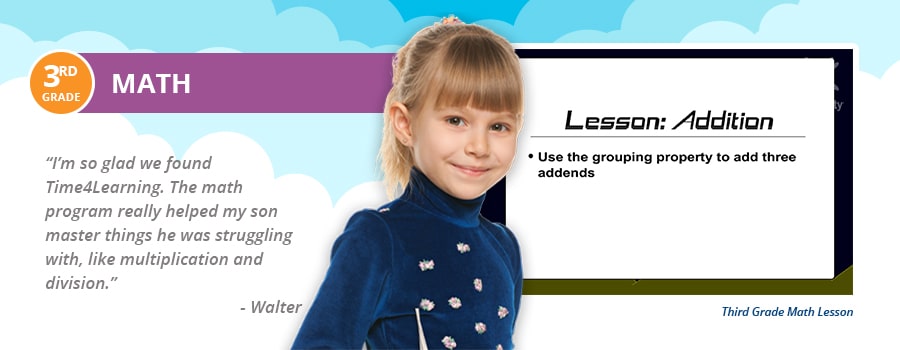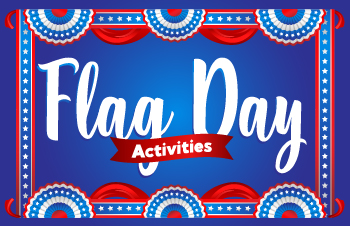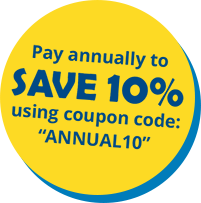Third Grade Online Math Curriculum
Multiplication and division are the name of the game in third grade math. Students will be introduced to these concepts, learn their multiplication table and understand what it actually means to multiply and divide.
Having a solid understanding of 3rd grade math facts will help students grasp these important concepts and reach their learning targets. On this page, you’ll learn important information including:
What Math Should a Third Grader Know?
For third grade math, students are expected to know their fact families in addition, subtraction, multiplication and division. With this information, they will be able to solve two-step word problems and equations. In addition, third graders should know how to read and write large numbers through the hundred thousands and know the place value for each digit.
Below are a few other skills that a third grader should know.
- Add four-digit numbers
- Subtract with regrouping
- Round numbers to the nearest tens and hundreds
- Understand two- and three-dimensional shapes
- Solve word problems that involve time, money, and measurement
An effective third grade math curriculum should ensure mastery of each of these concepts/skills by providing thorough instruction and plenty of opportunities for practice. Read on to learn about our third grade math lesson plans to discover how Time4Learning’s award-winning, comprehensive curriculum can do just that.
Third Grade Math Objectives
In third grade, there are a number of math objectives that your child should achieve. Doing so will allow them to easily learn more complex concepts later. Practicing math facts in the early elementary years as often as possible will help them focus on learning these new skills and understanding more advanced concepts in the years to come.
This year’s math objectives include:
- Gain the skills to do mental math
- Multiply two-digit numbers
- Divide two-digit numbers
- Understand, compare and identify fractions
- Interpret charts and graphs
Check out how Time4MathFacts (included in your subscription) fosters strong math fact fluency through interactive and gamified lessons that keep students engaged and mastering addition, subtraction, division and multiplication.
Time4Learning’s Third Grade Math Lessons
Convert numbers containing two to six digits from standard form to expanded form and vice versa.
Write numbers up to six digits using oral and written cues.
Order numbers up to six digits and compare numbers using the symbols <, >, and =.
Round numbers up to the ten-thousands to the nearest ten. Use number lines and knowledge of place value.
Round numbers up to the ten-thousands to the nearest hundred. Use number lines and knowledge of place value.
Round numbers to the nearest ten, to the nearest hundred, and to the nearest thousand.
Add three or more single digit addends. (grouping property) Add 2- and 3-digit numbers. (with and without regrouping)
Subtract 2-and 3-digit numbers. (with regrouping) Subtract 2- and 3-digit numbers when minuend has multiple zeros. (with regrouping)
Estimate sums and differences using rounding.
An introduction to multiplication (0-12 x 0-12) including multiplication by 0 and 1, using arrays and tables.
Define and list multiples of a given number (1-10). Explore multiplication as repeated addition and arrays.
Multiply two whole numbers with and without regrouping in which one factor is a one-digit number and the other is a 2-digit number. Multiply mentally by 10, 100, and 1000.
Multiply one-digit whole numbers by multiples of 10 in the range 10 – 90 using strategies based on place value and properties of operations.
An introduction to simple division problems including divisions involving 0 and 1 and divisions involving remainders using tables and other manipulatives.
Recognize and use basic division facts to 100 ÷ 10, and identify dividend, divisor, and quotient. Describe these division properties: you cannot divide by 0, and any number divided by 1 equals that number.
Represent and solve problems involving division. Interpret quotients of whole number as the either the number of objects in each share when objects are partitioned equally, or as the number of shares.
Represent and solve problems involving division. Use division within 100 to solve word problems in situations involving equal groups by using drawings and equations with a symbol for the unknown number to represent the problem.
Divide two-digit dividends by one-digit divisors, with and without remainders.
Identify arithmetic patterns using an addition table.
Identify arithmetic patterns using a multiplication table, and explain them using properties of operations.
Solve a multi-step word problem using multiplication and division.
Understand division as an unknown-factor problem.
Understand multiplication and use strategies to fluently multiply within 100.
Understand division and use strategies to fluently divide within 100.
Recognize fractions as part of a whole and understand the meaning of the numerator and the denominator.
Identify the fraction shown by a point on a number line and learn how to place a fraction on a number line.
Understand two fractions as equivalent if they are the same size, or the same point on a number line.
Compare two fractions with the same numerator or the same denominator using fraction models.
Identify parts of a set and parts of a whole with equivalent fractions with denominators up to 10.
Identify equivalent fractions. (1/2 = 2/4)
Order fractions with like denominators and compare fractions using the symbols <, >, and =.
Explore the relationship between fractions and decimals. (tenths and hundredths)
Identify decimals to the hundredths place. Read and write decimals to the hundredths.
Order decimals to the hundredths place, and compare decimals using the symbols <, >, and =.
Count collection of coins and bills up to $50. Add and subtract dollar amounts. (dollar and cents)
Solve word problems that involve the value of coins, bills, and making change.
Solve problems involving unit price of items.
Identify and extend repeating patterns and apply pattern rules using shapes, colors and numbers.
Identify and extend patterns and apply pattern rules using a sequence of related numbers.
Apply the appropriate rule to complete a chart including input/output tables.
Represent and evaluate written relationships as numeric expressions.
Determine the unknown whole number in a multiplication equation relating three whole numbers.
Determine the unknown whole number in a division equation relating three whole numbers.
Solve for an unknown quantity in an equation. Example: 3 + __ = 7.(Example: missing addend or missing factor)
Understand properties of multiplication and apply these properties as strategies to multiply.
Understand properties of division and apply these properties as strategies to divide.
Use the Order (Commutative) and Grouping (Associative) Properties of Addition and Multiplication to find equivalent expressions or equations containing an unknown quantity.
Describe line segments, lines, and line pairs.
Identify and classify angles as right, acute, or obtuse.
Identify the attributes of polygons (sides and angles) and sort by particular characteristics of the plane figure.
Identify the attributes of solid figures (edges, vertices, and faces) such as cubes, rectangular prisms, rectangular pyramids, cones, cylinders, and spheres and sort by particular characteristics.
Identify and create a two-dimensional representation of a three-dimensional figure.
Find the horizontal or vertical distance between two points on a coordinate grid.
Plot a point on a coordinate grid given an ordered pair and write the ordered pair of a point shown on a coordinate grid.
After being given navigational directions from the initial point, identify the ordered pair of the final point.
Given a plane figure, identify the congruent shape and create a congruent shape using other plane figures.
Apply a slide, flip, or turn to a plane figure and predict the result. Identify the image of a plane figure as a slide, flip, or turn.
Use line and point symmetry to identify and create symmetrical figures.
Define, tell, and show time to the hour, half hour, and quarter hour. Define, tell, and show time to the 5 and 1 minute intervals.
Find elapsed time using minutes, hours, days, and weeks. Develop measuring skills and demonstrate understanding of concepts related measuring time.
Solve problems of elapsed time using a number line.
Interpret time schedules using minutes, hours, days, and weeks.
Define units of length. (inch, foot, yard, mile) Estimate and compare length. Measure to the nearest half-inch.
Define units of capacity. (cup, pint, quart, gallon) Estimate and compare capacity.
Define units of weight. (ounce, pound) Estimate and compare weight.
Read thermometer to nearest 5-degree interval.
Define units of length. (centimeter, decimeter, meter) Estimate and compare length. Measure to the nearest centimeter.
Define units of capacity. (milliliters, liters) Estimate and compare capacity.
Define units of mass. (grams, kilograms) Estimate and compare mass.
Read thermometer to nearest 5-degree interval.
Estimate volumes of objects in liters and milliliters by comparing to benchmark objects.
Solve real-world problems involving mass in kilograms and grams, and volume in liters.
Measure the area of a rectangle using unit squares.
Find the area of a figure by counting unit squares.
Find the area of a rectangle by tiling and by multiplying the side lengths.
Interpret y = mx + b as a linear function.
Find the area of a rectangle by multiplying the length and width.
Find the area of a rectangle by dividing it into two smaller rectangles.
Find area by decomposing composite shapes into rectangles and adding the areas.
Find perimeter by counting units and by adding lengths. Measure to find the perimeter. Select appropriate label for measurement.
Find area by counting units. Multiply to find area. Select appropriate labels of measurement.
Compare perimeter and area.
Display and interpret data in pictographs.
Display and interpret data in vertical and horizontal bar graphs.
Display and interpret data in tables including tally, data, and frequency tables.
Display and interpret data in frequency tables using two attributes.
Determine the certainty, likelihood, and fairness of events.
Determine and list all the possible outcomes of an event.
Use Polya’s four-step method to solve two-step word problems using the four operations. Represent these problems using equations with a letter standing for the unknown.
Solve two-step word problems using the four operations. Assess the reasonableness of answers using mental computation and estimation strategies including rounding.
Scope & Sequence Copyright. © 2025 Edgenuity, Inc. All rights reserved.
Why Choose Time4Learning’s Third Grade Math Curriculum
At Time4Learning, we understand how critical it is to build a strong foundation in math. Without the proper math skills, students will struggle in later years. Our third grade math curriculum tackles the concepts mentioned above and more.
While our materials correlate to all state standards, we strive to ensure our students exceed their academic goals by the end of our coursework. As well, we aim at fostering a love of learning in each one of our students.
For parents, we provide an easy way to provide quality education for their children and not have to worry about grading, lesson planning or recordkeeping. Just log into the parent dashboard to monitor your child’s performance, print reports for your homeschool portfolios and you’re good to go!
Learn more about our online third grade homeschool curriculum, designed to help your child learn and master their fundamental concepts.






